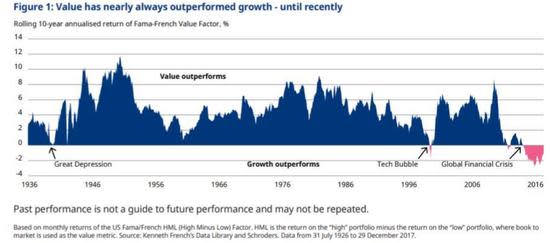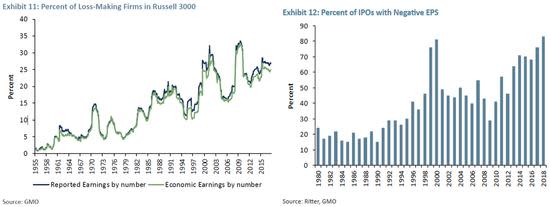'Money for Nothin': Have We Met Dire Straits?
"Now look at them yo-yos, that's the way you do it
You play the guitar on the MTV
That ain't workin' that's the way you do it
Money for nothin' and your chicks for free
Now that ain't workin' that's the way you do it
Lemme tell ya, them guys ain't dumb
Maybe get a blister on your little finger
Maybe get a blister on your thumb
We got to install microwave ovens, custom kitchen deliveries
We got to move these refrigerators, we gotta move these color TVs"
-Dire Straits, "Money for Nothing"
When baby boomer adults were in their 20s, we sang along with Mark Knopfler and Dire Straits. Their song "Money for Nothing" defined the era of music videos. We got cable in 1981 and will admit that we were glued to the TV watching music videos of the bands and performers we loved.
Today, there is a song being played in the U.S. economy, and those same baby boomers are rocking out on the lowest interest rates of the last 80 years. We call it "Money for Nothin' and Bonds Issued Free!"
Bond investments have gone up in value off and on for 38 years and owners of common stock investments have had an immense tailwind provided by miniscule interest rates. "Lemme tell you them guys (and gals) ain't dumb." Just look at the returns the last 38 years.
In effect, theory has played out in practice. The net present value of future profits is discounted using the prevailing rate of interest. If that rate is 7%, $1,000 paid to you in 10 years is worth $508.35 now. If that rate is 2%, $1,000 paid in 10 years is worth $820.35. Stocks are priced 60% higher, in theory, based on the decline in interest rates. When rates go down like that and you own common stocks and long-term bonds, you won't "get a blister on your little finger" or "on your thumb!"
Could this be a tough era for equities?
What have the "yo-yos" been up to with their investments? Investors have been trained to own the stock market, and recent reports show that those owning the stock market via indexes now exceed those owning stocks individually or via stock-picking mutual funds. In other words, "that's the way you do it." We like to say that the stock market does what it must do to frustrate the most people, so let's consider how investors will get frustrated this time.
Stocks are expensive compared to history, but not compared to interest rates:

Source: Advisor Perspectives. Data for the time period Jan. 1, 1971 to June 30, 2017.
Growth stocks are overvalued compared to history and valuation matters dearly to 10-year returns:

Source: Fama French, YCharts Inc., Aviance Capital Partners. Data as of Sept. 3.

Source: Kenneth French's Data Library and Schroders. Data for the time period Jan. 31, 1926 to Dec. 29, 2017.
Profits and free-cash flow matter, something temporarily lost on market participants:

Source: The Bogle eBlog. Data for the time period Jan. 1, 1900 to Dec. 31, 2016.
It appears to us that Wall Street is shoveling trashy initial public offerings (IPOS) at the stock market like at other historical index peaks:

Source: GMO. Data for the Percent of Loss-Making Firms as of Dec. 31, 2018. Data for Percent of IPOs is for the time period Jan. 1, 1980 to Dec. 31, 2018.

Source: Bloomberg, Data for the time period July 2 to Sept. 30.
Inflation matters to price-earnings ratios:

Source: https://awealthofcommonsense.com/2019/08/the-impact-of-interest-rates-inflation-on-stock-market-valuations/. Data as of June 30.
Who can win in a tougher era for indexes?
Follow millennial age and spending in households:

Source: BofA Merrill Lynch Global Research Data for the time period Jan. 1, 1990 to Dec. 31, 2030. Forecasted data is projected.
In an environment where the number of 30 to 45-year-old Americans is exploding, we believe you must point your portfolio toward them.
"We got to install microwave ovens, custom kitchen deliveries
We got to move these refrigerators, we gotta move these color TVs"
We will rely on earnings growth while assuming that higher interest rates are going to contract price-earnings ratios via reducing the net present value of the future earnings streams.

Source: Fundstrat, "The Long Game," 2019 Strategy. Data for the time period Jan. 1, 2018 to Dec. 31, 2028. Forecasted data is projected.
Target (NYSE:TGT) sells in four of the five largest spending categories for 30 to 40-year-old shoppers. Homebuilders have more work to do than they've had since the 1970s and the index has a tiny representation in home building. Banks stand ready to loan money to millennial households and could see interest rate spreads go up as the lending rates increase faster than the deposit rates.
The spending chart shows that millennials will grow their use of gasoline and operate cars and vans in the suburbs. Energy is likely to grow in importance as we add the largest adult population group to ownership of vans and SUVs. We are accumulating shares of Occidental Petroleum (NYSE:OXY) to take advantage of this opportunity.
Lastly, inflation could be caused by too many millennials wanting the same things at the same time. Remember, the definition of inflation is too much money chasing too few goods.
Who loses as money regains a higher cost and bonds are declining in value?
Technology investments and the FAANG stocks have been the main game in town as interest rates fell. Investors have flooded money into the companies who provided revenue growth in an era where it was hard to come by. They flooded the IPO market with "money" buying "nothin'" and in the process have massively diluted growth investor choices and damaged growth stock performance.
In our opinion, bonds are a freight train headed for a collapsed bridge at high speeds. Low rates have pumped up low-volatility stocks and momentum stocks and opened the door to a mini-collapse in price-earnings multiples.
Finally, the S&P 500 Index is loaded with overpriced stocks from the prior list and appears ready to repeat the 1966 to 1982 period. As a reminder, interest rates went up constantly as baby boomers formed households and price-earnings ratios went down to 6 at the lows in August of 1982. It won't matter that you got your equity exposure cheaply if you go more than a decade without making money.
"I shoulda learned to play the guitar
I shoulda learned to play them drums"
If we are correct, in 10 years, interest rates will normalize toward historical averages around 5%. If that is the case and millennials drive the economy forward, people will wish they'd learned stock picking or how to select stock pickers. Just like we all wished we had "learned to play the guitar" or "play them drums" back in the early 1980s.
Disclosure: Smead holds Occidental Petroleum and Target.
The information contained in this missive represents Smead Capital Management's opinions and should not be construed as personalized or individualized investment advice and are subject to change. Past performance is no guarantee of future results. Bill Smead, Cole Smead, and Tony Scherrer wrote this article. It should not be assumed that investing in any securities mentioned above will or will not be profitable. Portfolio composition is subject to change at any time and references to specific securities, industries and sectors in this letter are not recommendations to purchase or sell any particular security. Current and future portfolio holdings are subject to risk. In preparing this document, SCM has relied upon and assumed, without independent verification, the accuracy and completeness of all information available from public sources. A list of all recommendations made by Smead Capital Management within the past twelve-month period is available upon request.
(C)2019 Smead Capital Management, Inc. All rights reserved.
This Missive and others are available at www.smeadcap.com.
This article first appeared on GuruFocus.
